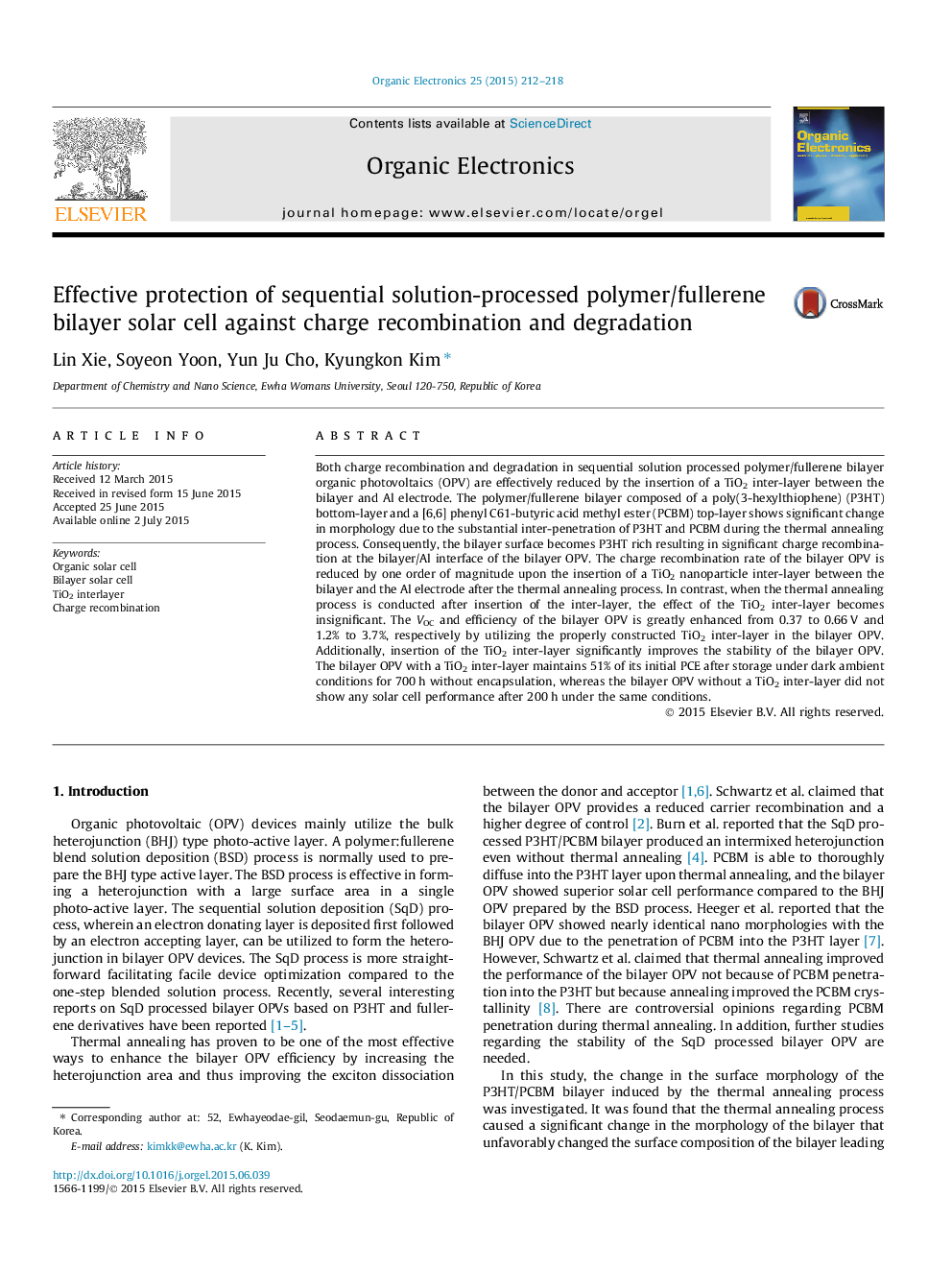| کد مقاله | کد نشریه | سال انتشار | مقاله انگلیسی | نسخه تمام متن |
|---|---|---|---|---|
| 1263643 | 1496832 | 2015 | 7 صفحه PDF | دانلود رایگان |
• Sequentially deposited (SqD) polymer/fullerene bilayer exhibited low VOC.
• The low VOC of SqD processed bilayer OPV was due to the charge recombination.
• VOC was recovered by insertion of TiO2 nanoparticle layer between active/electrode.
• Stability of SqD processed bilayer OPV was greatly enhanced by TiO2 interlayer.
Both charge recombination and degradation in sequential solution processed polymer/fullerene bilayer organic photovoltaics (OPV) are effectively reduced by the insertion of a TiO2 inter-layer between the bilayer and Al electrode. The polymer/fullerene bilayer composed of a poly(3-hexylthiophene) (P3HT) bottom-layer and a [6,6] phenyl C61-butyric acid methyl ester (PCBM) top-layer shows significant change in morphology due to the substantial inter-penetration of P3HT and PCBM during the thermal annealing process. Consequently, the bilayer surface becomes P3HT rich resulting in significant charge recombination at the bilayer/Al interface of the bilayer OPV. The charge recombination rate of the bilayer OPV is reduced by one order of magnitude upon the insertion of a TiO2 nanoparticle inter-layer between the bilayer and the Al electrode after the thermal annealing process. In contrast, when the thermal annealing process is conducted after insertion of the inter-layer, the effect of the TiO2 inter-layer becomes insignificant. The VOC and efficiency of the bilayer OPV is greatly enhanced from 0.37 to 0.66 V and 1.2% to 3.7%, respectively by utilizing the properly constructed TiO2 inter-layer in the bilayer OPV. Additionally, insertion of the TiO2 inter-layer significantly improves the stability of the bilayer OPV. The bilayer OPV with a TiO2 inter-layer maintains 51% of its initial PCE after storage under dark ambient conditions for 700 h without encapsulation, whereas the bilayer OPV without a TiO2 inter-layer did not show any solar cell performance after 200 h under the same conditions.
Figure optionsDownload as PowerPoint slide
Journal: Organic Electronics - Volume 25, October 2015, Pages 212–218
